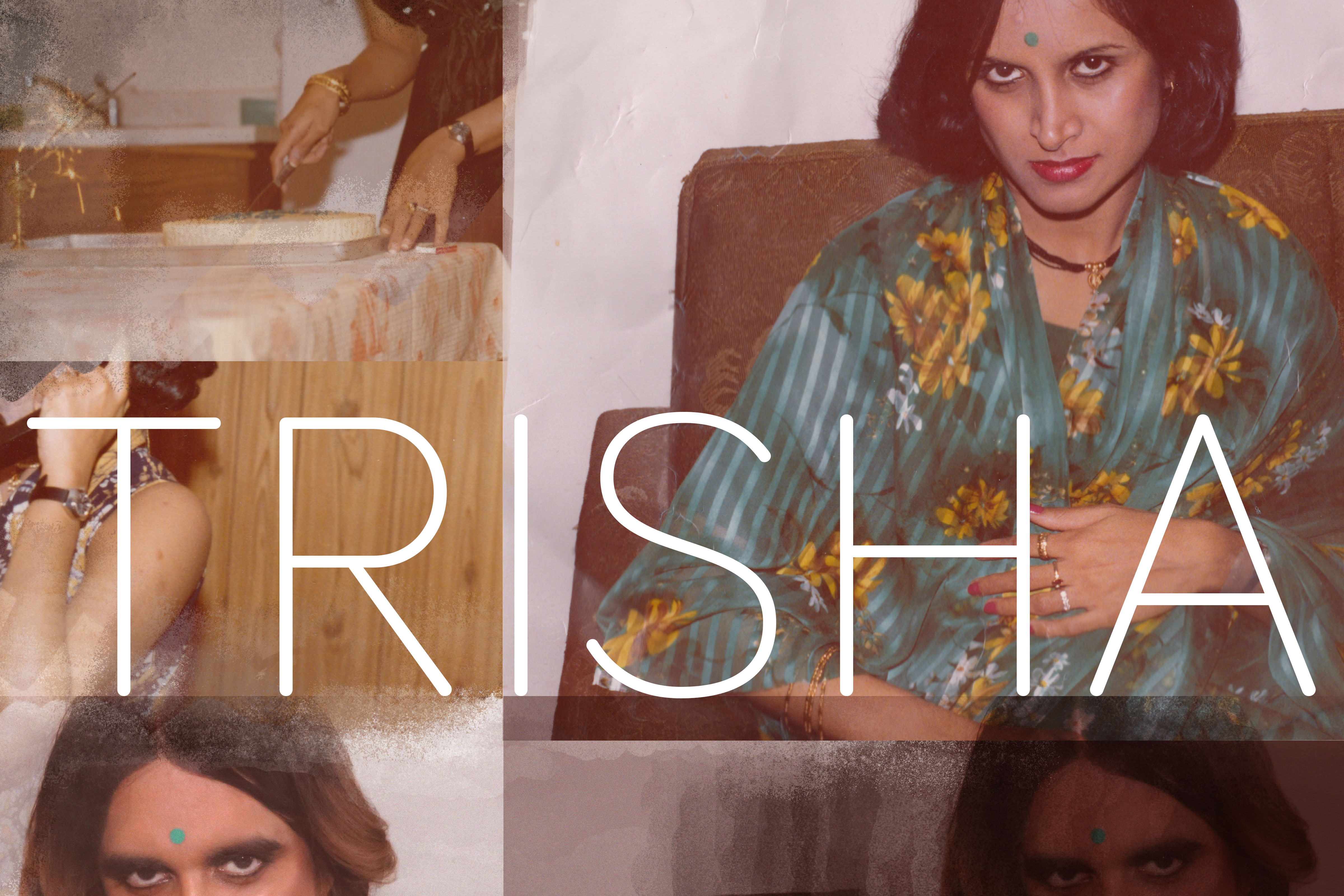
“Maybe I will define family by what I believe it’s not. I don’t think that family is conditional to being related by blood. I don’t think family needs to be centered around romance or sex, I don’t think family needs to center children or monogamy. It’s not really what family is, but that’s off the top of my head what family isn’t.” – Vivek Shraya
Tracing Vivek Shraya’s timeline of creative expression is an exhilarating exercise that speaks to the immense depth and interconnectivity of her work. In fact, the more you look into Shraya’s creative practice, the more you suspect her obsession with connective tissue – not just between the various disciplines she engages in: songs expanding into books, poetry grounding performance, music production deriving from filmmaking – or in the way she examines and re-examines the interrelation of race, gender, joy, anger, and identity. Shraya’s work is also rich with connections among people – her many collaborators and real, imagined, and internal audience, and her care towards these connections make them feel as fun as they are life-sustaining.
For her exhibition Trisha, curated by John Chaich at Ace Hotel New York, Shraya created what she calls a photo essay, in which she recreated newly encountered photographs of her mother from the ‘70s and wrote an artist statement in the form of a letter. The exhibition is an exploration of many things, including motherhood, a generational change, and the artist’s transgender identity, but at its core, it’s a tribute to Trisha.
In anticipation of the closing reception of Trisha on August 27th, coinciding with the launch of her tour celebrating the release of her new book, I’m Afraid of Men, we had a chance to chat with Shraya about her creative process and the collaborations that fuel her.


Digital Diaspora Family Reunion: Your mother’s photos are part of an archive that you first came across three years ago. Can you tell me about this archive and what it was like to come across these photos?
Vivek Shraya: My immigrant parents have been through what they call a slow project of “downsizing” in their old age. They took all of our old childhood photo albums and paid very little money to get it all scanned. The photos themselves don’t exist anymore. One day my brother and I receive six disks, and they’re like, “Here you go, here’s our family photos!” All on disks. Aside from being like, “What happened to the photos?” I was curious about just going through them.
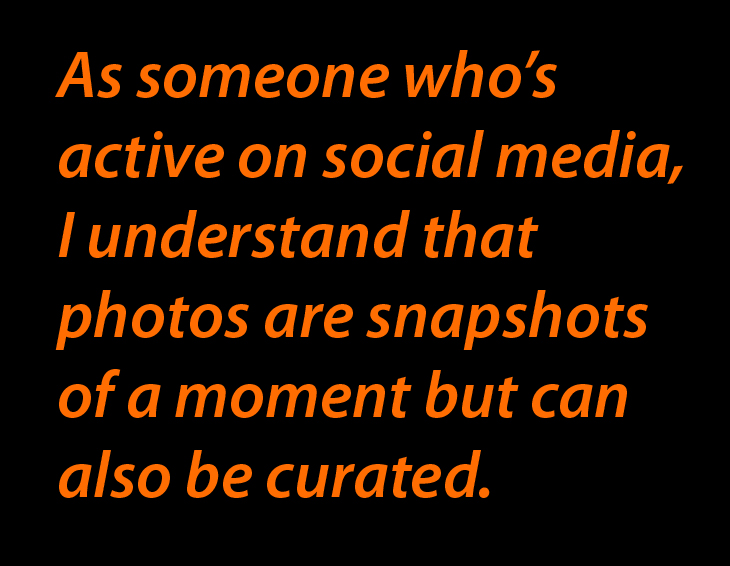 I grew up with a very organized mother – something that I also probably inherited from her – so our photo albums were sectioned by human. There’s my brother’s photo album, and my photo album, and then the general family album – photos we’re all in. And then there’s this mysterious disk of photos I’d never seen, and it turned out to be photos of my parents’ wedding and their honeymoon when they first arrived in Canada.
I grew up with a very organized mother – something that I also probably inherited from her – so our photo albums were sectioned by human. There’s my brother’s photo album, and my photo album, and then the general family album – photos we’re all in. And then there’s this mysterious disk of photos I’d never seen, and it turned out to be photos of my parents’ wedding and their honeymoon when they first arrived in Canada.
As I mention in the essay, I was really surprised by how happy and in love my parents look because that wasn’t the relationship that I witnessed as a child. I had all kinds of emotions. I think one of the strongest ones was guilt – that assumption that children ruin their parents’ lives. It felt like I had evidence of this, and it made me sad to think of the ways motherhood may have stripped my mom of her joy that I saw in photographs.
Of course, as someone who’s active on social media I understand that photos are snapshots of a moment but can also be curated. In one of the photos in Trisha, my mom is holding a stuffed animal, and I can’t imagine she did that willingly. I’m sure my dad coerced her into doing that. So objectively I know that what I see isn’t the full picture, but that was my initial response to finding those photos.


DDFR: I loved that photo pairing, by the way, of you then holding the elmo.
Shraya: One of the biggest decisions that had to be made when embarking upon this project was how precise the replicas had to be. I worried that if it became a project that was obsessed with 100% perfect replication, any small difference would then take away from the project. So I decided with the photographer, Michelle, that it was more about recreating the energy and the feeling as opposed to re-creating absolutely every element in the original photos. Adding certain differences felt like an interesting way to inject humor, and Elmo was definitely an opportunity to inject humor. Elmo also represents a different time than the time in which the photos of my mom were taken, which was likely to be the late ‘70s. Other decisions included having the laptop with a clock screensaver on it as opposed to a formal clock, or being on a cell phone as opposed to using a corded phone. Those were all opportunities to just mark time and the difference of time.


DDFR: Once you re-created the set, was there anything unexpected that came out of the performative nature of the project?
Shraya: One of the most surprising and at times challenging parts of the project, both during and after, was realizing that my mom and I were actually quite different. This was a project that was envisioned around a form of similarity, but even when I was putting on a sari it felt very foreign to me and very uncomfortable. Even though so much of my gender presentation has been influenced by my mom, I definitely felt like I was wearing a costume while taking these photos. It was surprising because on some level I thought that I would be walking in more familiar shoes, but instead it felt like I was somebody else and trying to understand who that person was.
For example, the first photo of the series is my mother looking up at a framed photo from her wedding with her arms are crossed, as a newlywed. As someone who was trying to recreate my mother, it did feel surprising to then stand there, have my arms crossed, look up at that photo that I grew up seeing all the time, and wonder what might actually have been going on in her mind.


DDFR: Thank you so much for sharing that. That’s such a complicated feeling – trying to introspect into our parents’ lives, especially as the children of immigrants. In your essay, it’s a revelation to find out that the title of the show, Trisha, is what your mother would have named her daughter. How did you come to understand that name or persona?
Shraya: While I’ve described the project as a tribute to my mother, it’s also a tribute to the daughter that she wasn’t allowed to have. The project, to me, is a tribute to Trisha. So I wrote about how my mom prayed to have two boys because she didn’t want to have a girl, and yet, simultaneously, we grew up knowing that had my mom had a girl she had a name picked out, and that was Trisha.
What I love about calling the project Trisha too is the assumption that it’s my mom’s name. For me it’s very much a photo essay, not just a photo project. It’s very much about the relationship between the photos and text, and if you don’t read the essay, you might assume my mom’s name is Trisha. But for me, it felt more important to name it after the daughter that she prayed not to have, and the viewer doesn’t know this connection to the title until the last line of the essay.
DDFR: You draw from such deep recesses of life experience to make your work. It’s inspiring to see how open you are and the power that comes from that.
Shraya: Throughout my career, I’ve seldom thought, explicitly, that I’m going to pull from personal experience. For me, the process of making art has been about doing so. Art and personal experience, for me, go hand in hand.
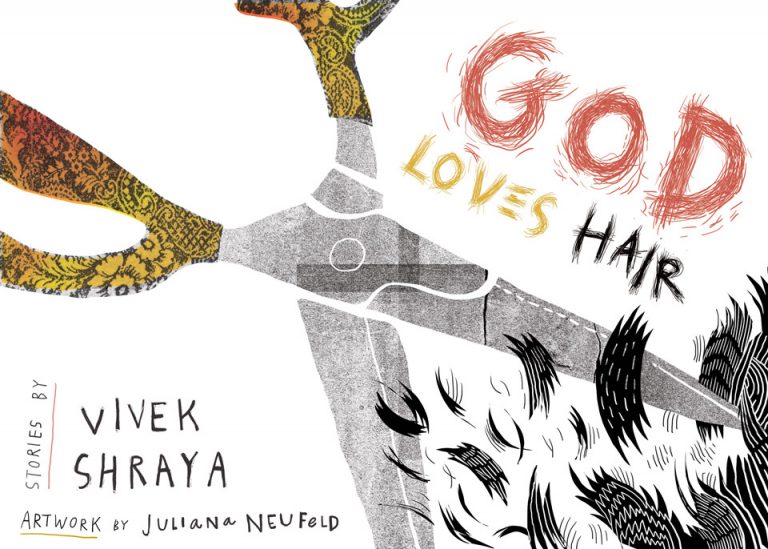
Cover of Vivek Shraya’s book, God Loves Hair, illustrated by Juliana Neufeld
However, I will say that it was the lack of success with my music career that I had in my 20s that opened me up to writing. I was starting to feel like music was never going to happen for me, but I still needed to feel creative so I started to write what was to become my first book, God Loves Hair. The personal narratives that I explored in music tended to circle around love and longing, and I think moving away from songwriting momentarily was actually quite freeing. Suddenly there was so much I wanted to say about what it meant to be queer and gender nonconforming, and having immigrant parents, and growing up in an immigrant household. Those are all things that I, at the time, didn’t know how to express in music and had been given the impression that music could not hold. So I will say that my music career not taking off was what pushed me to pull deeper from personal experience.
DDFR: And then you made a great return to music!
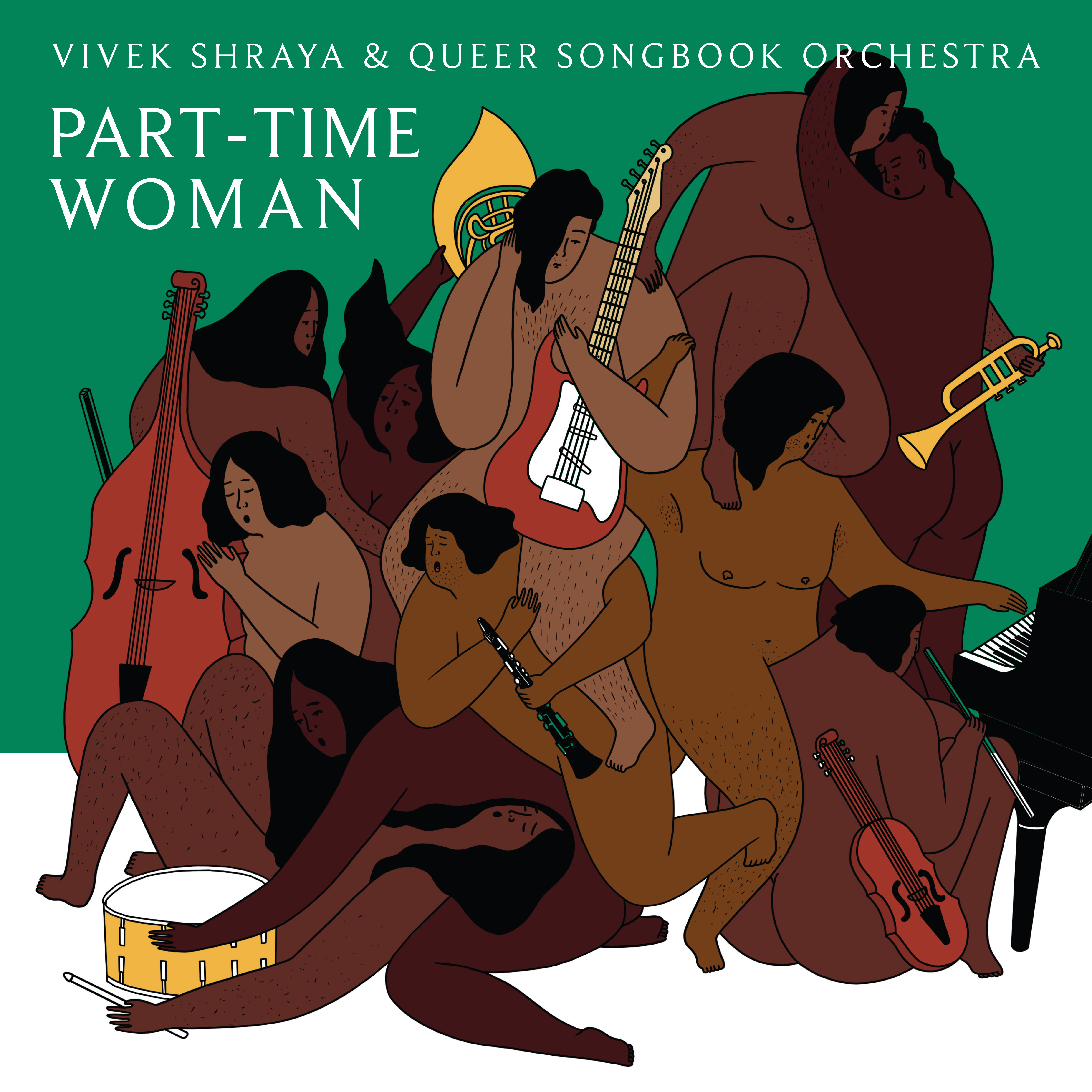
Album art from Vivek Shraya’s solo album Part-Time Woman, released 2017
Shraya: Last year, I put out my first solo album in six years called Part-Time Woman, which was recorded with Queer Songbook Orchestra, and it was the experiences that I had in writing and in making film over that six year span that really inspired that album. Suddenly I felt like all the things I couldn’t sing about in my 20s, or that I was encouraged not to sing about in my 20s, I knew how sing about and wanted to. So Part-Time Woman explores gender, and misogyny, and lateral violence, and a lot of themes that I had only felt I could explore in more traditional forms of writing. In that six year span I ended up forming a band with my brother as well, called Too Attached. We put out an album this year, Angry, which is a reclamation of racialized rage and is really about people of color owning our anger.
DDFR: How did this sibling collaboration come about?

Siblings Shamik Bilgi and Vivek Shraya of Too Attached
Shraya: Our relationship in our late teens and most of our 20s was really fraught, and it was through music that we started to reconnect. I ended up singing on an album of his, and he ended up beatboxing on an album of mine and then scoring a film of mine. So in our late 20s, early 30s, we started informally collaborating with each other.
It was really interesting to just circle back to music because, as much as my brother and I have a lot of differences, we did grow up in the same house. We have a lot of similar references and influences. My dad’s entire Bollywood collection and 80s pop collection were all part of the music that we listened to. So it felt really seamless in a way, for us to grow into a more formal collaboration, which we call Too Attached.
It’s definitely a work in progress. My sibling relationship is probably my most challenging relationship. Sometimes I feel like forming a band with my brother is maybe the most challenging thing I’ve ever embarked upon as an artist. But we just have so much respect for each other, and when I’m on stage with him I kind of go back to that childhood place to sitting next to him at our religious organization and singing. There’s something about it that feels so comforting and nostalgic and familiar and fun. I’m really proud of Shamik and I’m excited about what will happen next for us.

Siblings Vivek Shraya and Shamik Bilgi of Too Attached
DDFR: Your practice is full of collaborations beyond this collaboration you have with your brother. What role does collaboration play in your creative process?
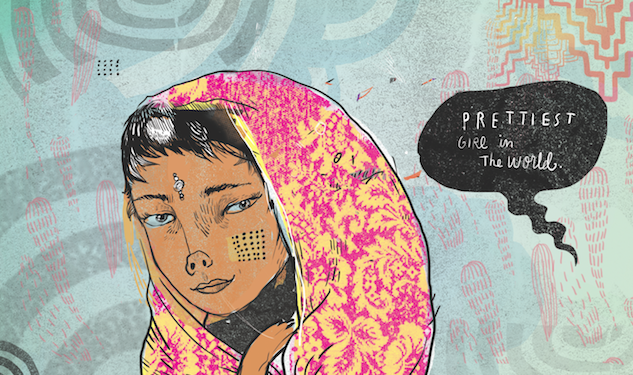
Illustration by Juliana Neufeld for Vivek Shraya’s book, God Loves Hair, published 2010.
Shraya: I’d say the first half of my art career was solely music, solely making albums, and for the most part was quite solitary. It’s interesting because that’s also the most invisible part of my career, and there’s something about that time that feels lonely. Important, because I do think I was developing a voice and a sound, but also lonely.
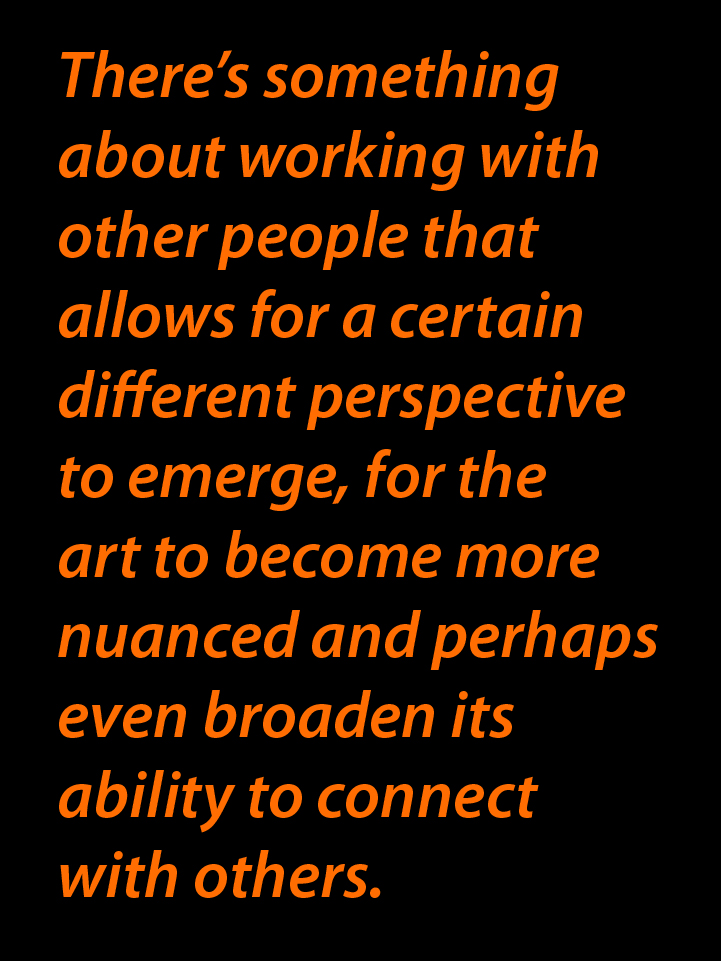 Then in writing my first book, God Loves Hair, I ended up collaborating with an illustrator, Juliana Neufeld, and the process truly felt collaborative in that we wrote and illustrated simultaneously. She would send drafts of her illustrations, and the better her drafts got, the more I wanted the writing to be better. So I would add details to my writing, and her next illustrations would include some of those details. It in some ways felt like building a friendship through art, which I’ve really grown fond of doing.
Then in writing my first book, God Loves Hair, I ended up collaborating with an illustrator, Juliana Neufeld, and the process truly felt collaborative in that we wrote and illustrated simultaneously. She would send drafts of her illustrations, and the better her drafts got, the more I wanted the writing to be better. So I would add details to my writing, and her next illustrations would include some of those details. It in some ways felt like building a friendship through art, which I’ve really grown fond of doing.
I’ll never forget when I met Juliana for the first time to talk about my artistic vision for the project and brought her, in true Vivek fashion, a stack of 50 visual references, a lot of them from Hindu iconography. My general idea for illustrations for the book was a modernization and a queerifying, I guess, of Hindu iconography. For instance, Hindu iconography will feature Krishna eating from a spilled bucket of butter. My idea would be, ‘How about we draw Krishna, but he’s applying lipstick instead,’ or something.
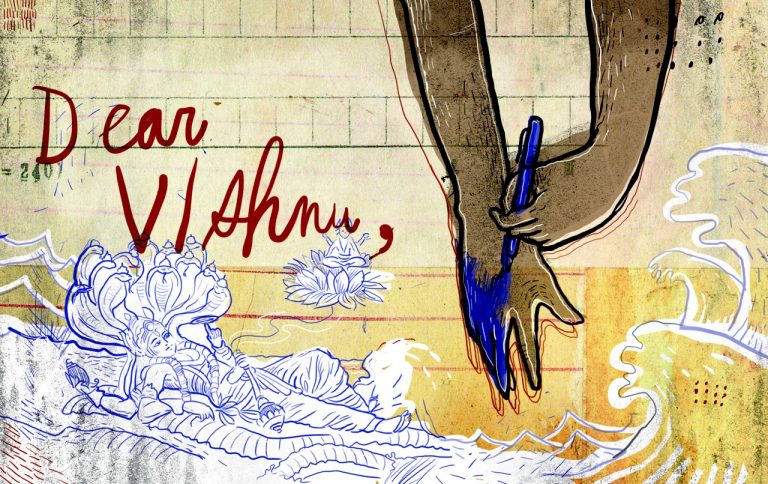
Illustration by Juliana Neufeld for Vivek Shraya’s book, God Loves Hair, published 2010.
I remember Juliana coming back and being like, ‘I like this idea, but ultimately what you’ve written is so much more contemporary. I worry that if we just borrow or try to reinvent existing iconography that it will be a disservice to your story.’ And for me, this has been the beauty of collaboration. As an artist, when you are working on your own projects, you have no sense of objectivity. It’s all tender, it’s all personal. But there’s something about working with other people, especially people who are invested in the project and want the project to be the best that it can be, that allows for a certain different perspective to emerge, for the art to become more nuanced and perhaps even broaden its ability to connect with others.
So in some ways, perhaps it’s not surprising that my increase of success and connection have been tied to collaboration, as opposed to my solo work. I’m sure that’s not the only factor, but I’m curious about it being a factor, because that’s certainly a significant shift between the first half of my career and the second half. So moving forward, I have no desire to make a solo album ever again. I already know what it’s like for me to write a song on my own. I’m really curious about what happens when artists come together.
♦
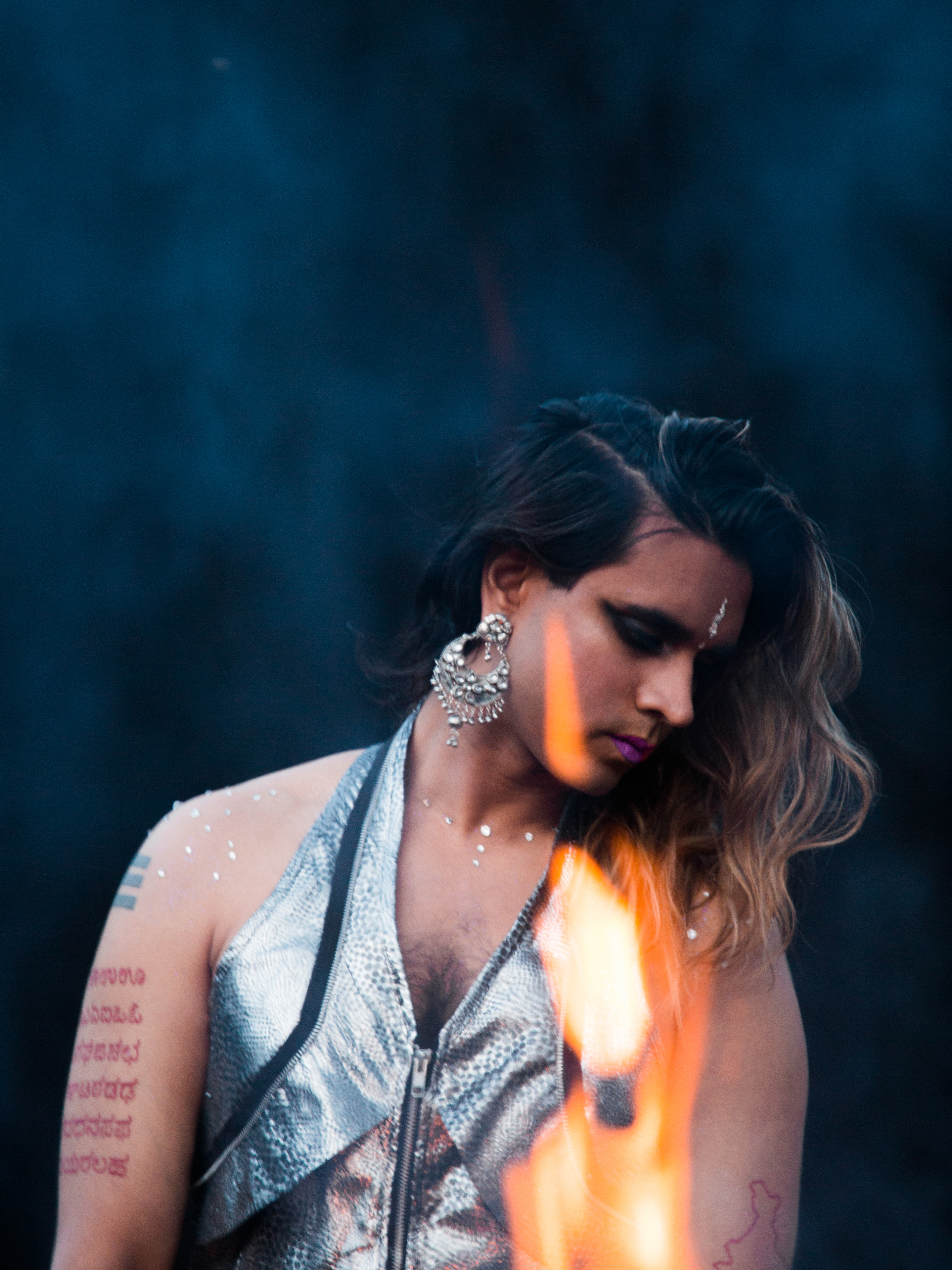 Vivek Shraya is an artist whose body of work crosses the boundaries of music, literature, visual art, and film. Her 2017 album with Queer Songbook Orchestra, Part‑Time Woman, was included in CBC’s Best Canadian Albums of 2017, and her first book of poetry, even this page is white, won a 2017 Publisher Triangle Award; her next book, I’m Afraid of Men, will be out in Fall 2018 from Penguin Canada. She is one half of the music duo Too Attached and the founder of the publishing imprint VS. Books.
Vivek Shraya is an artist whose body of work crosses the boundaries of music, literature, visual art, and film. Her 2017 album with Queer Songbook Orchestra, Part‑Time Woman, was included in CBC’s Best Canadian Albums of 2017, and her first book of poetry, even this page is white, won a 2017 Publisher Triangle Award; her next book, I’m Afraid of Men, will be out in Fall 2018 from Penguin Canada. She is one half of the music duo Too Attached and the founder of the publishing imprint VS. Books.
A Polaris Music Prize nominee and four-time Lambda Literary Award finalist, Vivek was a 2016 Pride Toronto Grand Marshal, and has received honours from The Writers’ Trust of Canada and CBC’s Canada Reads. She is currently a director on the board of the Tegan and Sara Foundation and an Assistant Professor of Creative Writing at the University of Calgary.
No comments yet.